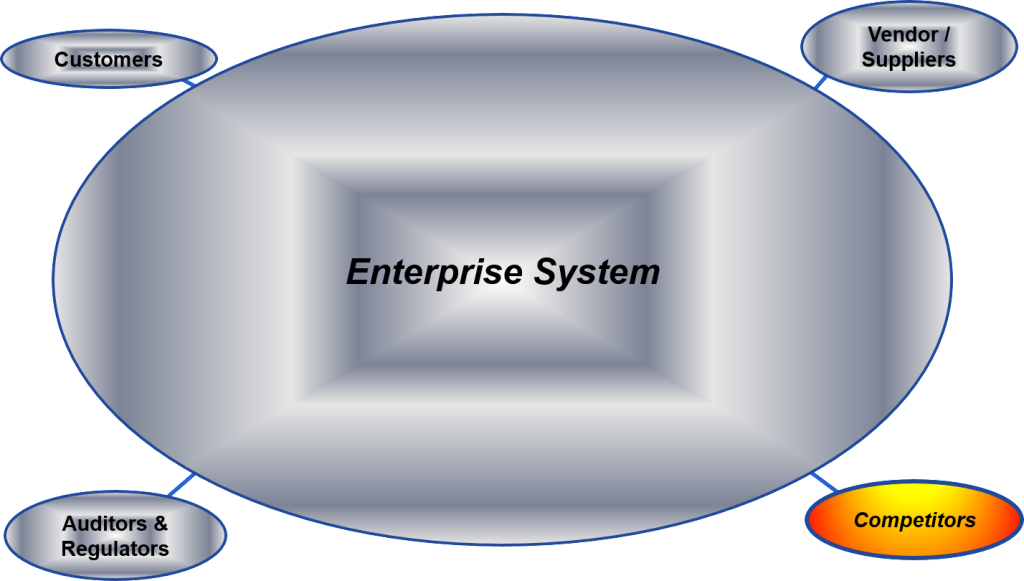An enterprise is an organized collection of people, process, information and technology capable of realizing a value-added ability to satisfy a customer-based need, in order to accomplish the goal of serving the enterprise mission and sustaining the existence of the enterprise.
An enterprise system is a systematical management perspective (an architectural viewpoint) of an enterprise as it works (operates) in the direction towards the goal of developing and delivering value-added system and service offerings satisfying need, serving the mission and sustaining existence.
As shown in Figure 3 – Enterprise System Concept Diagram, the systems-of-interest of the enterprise system utilized in defining architectural and managerial roles and responsibilities, interconnections and dependencies are
- enterprise system capability – resources which together systematically function to realize an ability to satisfy a customer-based need
- enterprise system management – resources which together systematically function to realize an ability to control the functionality of the capability
- enterprise system manager role – resources which together systematically function to realize an ability for controlling the functionality of the capability
- enterprise system architecture – resources which together systematically function to realize an ability to describe the capability
- enterprise system architect role – resources which together systematically function to realize an ability for describing the functionality of the capability in support of controlling the functionality of the capability
 Figure 3 – Enterprise System Concept Diagram
Figure 3 – Enterprise System Concept Diagram
External Working Environment
As shown in Figure 4 – Working Environment Concept Diagram, the enterprise system works in the marketplace environment with customers, vendors, suppliers, competitors, auditors and regulators.

Figure 4 – Working Environment Concept Diagram
The enterprise system in the working environment is constantly exposed to the many dynamic conditions formed by socio-technical needs, socio-cultural influences, and opportunities and threats, as it continually adjusts configuration of abilities to manage risk of damage to the system, and to attract the opportunities and customers needed to provide the energy required to keep the system working, to allow the system to change, and to sustain the system’s existence.